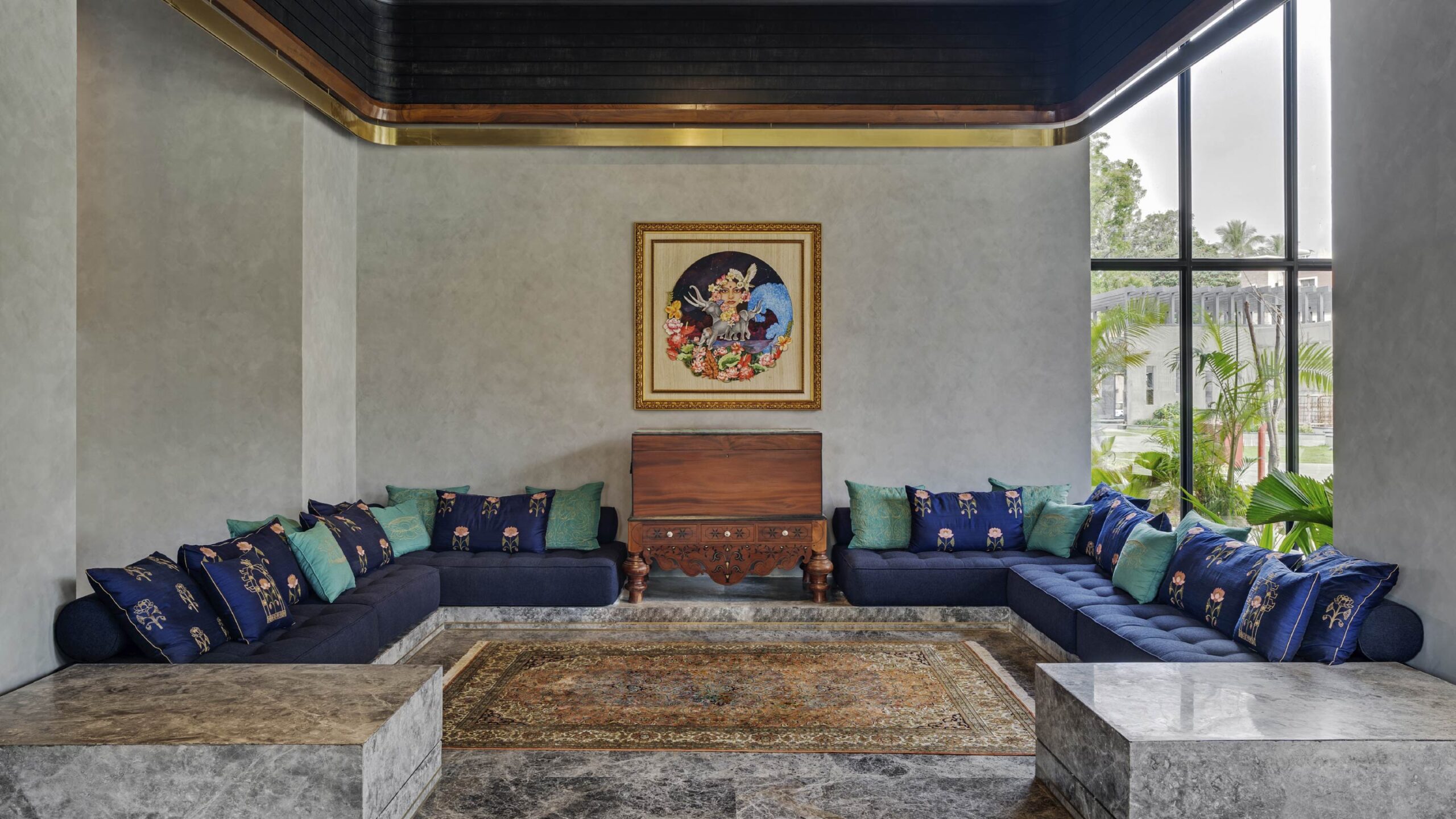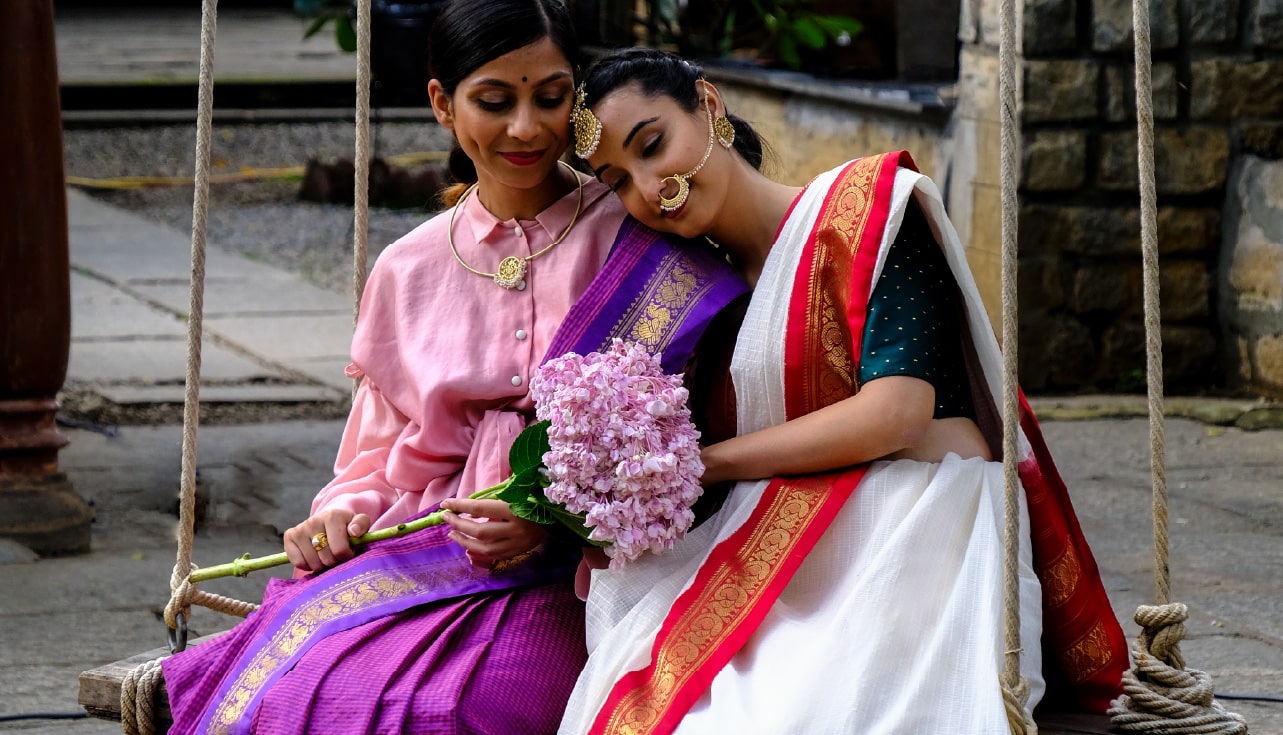Ravi Machani, founder of Svasa Homes, continues his story of how he built the Svasa community of more than a hundred thought leaders, business leaders, and family business entrepreneurs living in the same premises for the first time.
This is Part II of a three-part series, The Story of Svasa. Read Part I here.

Svasa Homes is a rare luxury project that deserved a community just as unique. Once we knew we wanted to create this community of unique individuals, of givers and takers, of collaborators and contributors, we started the journey of designing our clubhouse. That was the first step of the process. We asked ourselves an important question: ‘How do we take a clubhouse and turn it into something more spectacular?’ That’s when the Commonhouse was born as an idea. The Commonhouse is a 40,000 sqft community space designed for better social interactions. Nothing like it has ever been created by any developer. Inspired by Indian mythology, the philosophy of Purnatva, the Tridevi concept, and other important aspects of Indian heritage, the Commonhouse was envisioned as the crux of community life in Svasa Homes.
The transformation of an ordinary clubhouse into the Commonhouse is the same as the transformation of a house into a home. Just taking a physical space and turning it into a house doesn’t make it home. It takes the right people, the right environment, and, most importantly, personal touches throughout the space. It’s the small things that make you feel at home. These are things that can’t just be done by throwing money. You have to show love, you have to have passion.
So we decided to build a Commonhouse and not a clubhouse. We knew we had to create a space that would nurture our residents in their growth, both personal and professional. In short, a collection of spaces to support the aspirations of entrepreneurs and business leaders. Spaces that could help them in their journey. As entrepreneurs we say that we need a good balance between learning, money and execution in order to be successful. This balance was an important consideration before we started to design the Commonhouse.

“We wanted Svasa Homes to have a core design that’s unlike anything ever before. We started by looking at the choice of spaces. Instead of creating fancy spaces that aren’t of much value at the end of the day, we decided to have spaces with unparalleled value.”
RAVI MACHANI
Founder, Svasa Homes
That’s how the Bodhi library was born. The next question was, how do we make the library truly stand out? How do we make it a work of art? Hima Reddy, head of design at Svasa Homes, and I were brainstorming and we felt that the library should be a tribute to the goddess of learning, Goddess Saraswati. We wanted to create our own library with elements of Saraswati throughout it. It was from this initial thought – to dedicate our library to the goddess of learning – that Hima came up with the idea of the Tridevi concept as a guide for the rest of our design journey. And this was a turning point.
The Tridevi concept is the confluence of the three most important goddesses of India – Lakshmi, Saraswati, and Parvati. Each goddess stands for a certain quality. Lakshmi is the goddess of wealth. Parvati is the pursuit of executional excellence. Saraswati is the goddess of wisdom and learning. Together the three goddesses create a perfect balance that’s really vital for success in all areas of life. A golden balance of wealth, learning, and execution. By using the Tridevi concept to guide our design thinking process, we were able to beautifully weave Indian heritage into the modern needs of an entrepreneurial community.
Timeless Value Inspired by Indian Heritage
We started to do some mind mapping on how we wanted to bring ancient wisdom into today’s living. The reason we wanted to reintroduce ancient wisdom to the modern world is because it takes years – maybe hundreds, maybe thousands – to have something that truly stands the test of time. Timeless knowledge, timeless principles, timeless design – we wanted to bring these into Svasa.
Take the courtyard home design at Svasa Homes, for instance. It has been inspired by original Vedic courtyards and principles of Vaastu. No developer has ever introduced the ancient courtyard design in a high-rise residential project even though courtyard design is extremely important because our tropical climate requires us to design living spaces in a certain way.
The elements of heritage design that we have brought in have been specifically for a certain Indian lifestyle. In India, we are very social. We always have lots of guests coming over all the time. Welcoming people into our homes is at the heart of our culture. That’s why we created the public courts and the private courts at Svasa Homes. The public courts are in the Karya Lounge and the Krida Lounge comprising spaces where you can have guests over, play games, entertain, and have social time. And then we have the private courts which are spaces that are only for residents. We designed Svasa for what works for India, for a lifestyle that is natural to us. Emulating other influences in our homemaking often leads to issues related to a lack of relatability and comfort. We wanted to stick to our roots.
We also wished to celebrate Indian heritage, particularly the rich South Indian art and aesthetic which is quite unique in the world. That’s why we are unapologetically South Indian in our art and design. Being located in Basavanagudi gave us the extra confidence to go the whole nine yards when it came to showcasing South Indian heritage. There’s something beautiful about celebrating the rich heritage and culture of South India. It’s beautiful and timeless.
One interesting thing you’ll notice in South India is that there are many temples and very few palaces. The South Indian kings were known for investing time and resources into building community spaces, and that’s why we see so many temples. It’s a place of worship of course, but it’s also a space for the community. The kings back in the day lived in fairly humble private spaces. Historically, South Indian kings were dedicated to the community right from the beginning.
There’s an interesting temple called the Brihadisvara Temple. Raja Raja Cholan built this temple that’s over a thousand years old now. It’s exemplary. A lot of our inspiration comes from there. The mural art on the ground floor corridors that meets the eye as you enter the lift lobby area is an inspiration from Brihadisvara Temple. We commissioned a 100-foot mural, hand painted by very talented artists from Kerala over four months, to turn what is usually a transient space into one where you can’t help but look up in awe. Each ceiling mural depicts stories from Indian mythology – again a priceless offering for residents who appreciate art, culture, and heritage.

Creating a Brand from Ancient Wisdom
Svasa, as a brand and as a community, draws a lot from our ancient wisdom. The core of Svasa’s philosophy lies in spontaneous giving and taking – the very act of breathing. You give first and then you take. A lot of our Indian spirituality has taught us to respect the land we live on and the resources we consume. It’s just ingrained in us naturally. Somewhere along the way we might have lost a bit of it, but we’re working to keep this alive, to always respect our nature and our environment.
That’s why we always do a puja on the land whenever we start a new project anywhere. When we do what we call Griha Pravesh, we do something called Gudri Puja to respect all the previous generations that have lived and have shared ownership of the land. It’s an apology to all the little ants and animals and insects that are part of the land. You ask for their forgiveness, pray, take the blessings, and then start the project. When you do the puja, you’re only taking the permission to borrow the land temporarily. You ask for their permission, and you beg for forgiveness because you want to displace them, and you acknowledge that you will be a temporary tenant. It’s a very interesting concept that lends itself to real living. Being green and being inclusive is part of our DNA.
Celebrating heritage carries with it a deep respect for one’s roots, where one came from, and where one is heading. That’s why I love our work. We can be modern, but we can’t just disrespect the past. We all have borrowed from the past. The life that we live is a tribute to a lot of hard work and contributions from people of yesteryears. Everything we do, the way we live, the things we choose to consume, and everything else must be a totem of respect for them.
From a Residential Community to a Community that Creates Larger Impact
When your philosophies and concepts are in place, that’s when you start attracting the right set of individuals and customers. That’s literally what happened to Svasa Homes. Once word got out about our idea, concept and intention, our project was not just well-appreciated but started magnetising a unique league of leaders who saw value in what we were doing.
Building a community is well and good. But empowering the community with opportunities to learn together, collaborate and contribute is the next big step. Our endeavours didn’t stop with creating a community by simply bringing it together. We wanted to set an example in sustenance as well. How do you take a group of exceptional residents and inspire them towards a higher goal? How do you bring purpose into their lives that are in alignment with the most pressing needs of the world? This was going to be a new chapter in the story of Svasa Homes.



